Please Note: This post may contain affiliate links. If you click one of them, we may receive a commission at no extra cost to you. As an Amazon Associate, I earn from qualifying purchases.
Food is so much more than just fuel for our bodies; it’s a source of joy, comfort, and sometimes even nostalgia. Have you ever bitten into a chocolate chip cookie and suddenly felt transported back to Grandma's kitchen? That’s the magic of food! But what if we could harness that magic to create positive associations with healthier choices? Let’s dive into how we can make every meal an opportunity for happiness rather than just a necessity.
Top Takeaways and Key Concepts
Create positive food associations: Pair healthy foods with fun, memories, and social interactions.
Make meals enjoyable: Experiment with flavors, spices, presentation, and cooking methods to spark excitement.
Establish meal rituals: Use theme nights or family cooking to make eating memorable and joyful.
Practice mindful eating: Focus on taste, texture, aroma, and fullness while avoiding distractions.
Balance indulgence with nutrition: Enjoy treats guilt-free while prioritizing nutritious foods most of the time.
Summary of This Article
This article emphasizes transforming the way we relate to food by building positive emotional connections and joyful experiences around meals. It explains how making healthy foods fun, establishing meal rituals, and practicing mindful eating can increase enjoyment, reduce emotional eating, and improve overall well-being. The piece also highlights celebrating small wins, balancing indulgence with nutrition, and fostering social connections through food. By approaching eating with intention, creativity, and awareness, readers can cultivate lasting healthy habits while maintaining pleasure and satisfaction in their diets.
Understanding Emotional Connections to Food

Research shows that many people eat ice cream when they're sad, but if you really want to feel better, just pretend you're a cartoon character and it will magically turn into a salad!
“Food is my best friend. It’s the only thing that doesn’t betray me.” —Kylie Jenner
We all have those foods that spark joy—maybe it’s pizza on Friday nights or grandma's famous lasagna. These dishes often come with memories attached, which makes them feel extra special. But here’s the kicker: not all emotional connections are healthy ones. Think about it: do you reach for ice cream when you're sad? It’s like your brain has created a shortcut where sweets equal comfort.
To be fair, indulging in your favorite treats now and then is not just acceptable; it’s actually a part of enjoying life! Who doesn’t love sinking their teeth into a warm chocolate chip cookie or savoring a slice of pizza after a long week? These little pleasures can bring joy and comfort, reminding us of good times spent with friends and family. However, the real issue kicks in when we begin to rely on food as our go-to solution for dealing with stress or sadness. It’s like having that one friend who only shows up when they need something—food should be more than just a quick fix.
When we turn to comfort foods during tough moments, it can create an unhealthy cycle. Sure, that tub of ice cream might provide temporary relief from a rough day, but afterward, you might find yourself feeling guilty or sluggish. This pattern can lead to emotional eating becoming your default response to any negative feelings—a slippery slope that’s hard to climb back from. So instead of reaching for those familiar comforts every time life gets tough, why not shake things up and explore new ways to connect emotionally with healthier options?
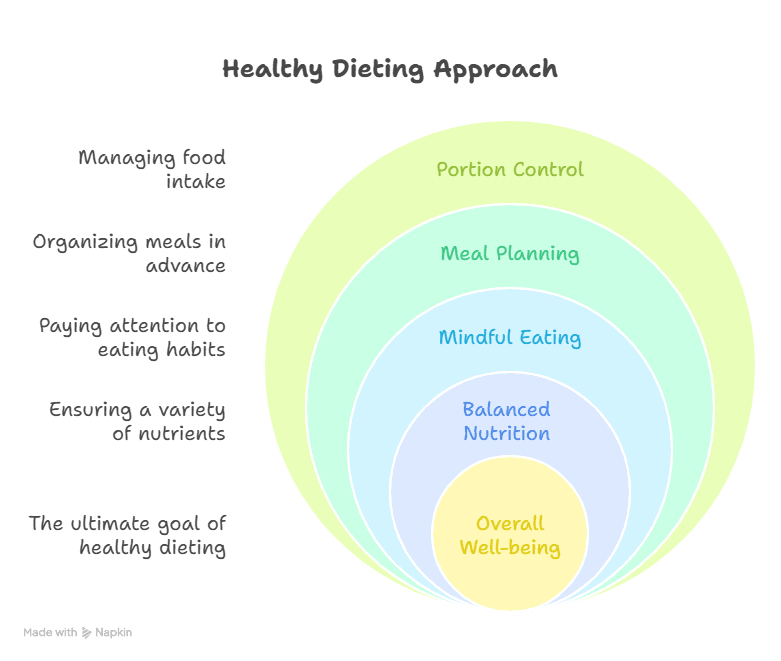
Imagine creating happy memories around fruits and veggies! Think about hosting a fun fruit-tasting party where everyone brings their favorite fresh produce. You could set up different stations featuring exotic fruits you’ve never tried before—like dragon fruit or rambutan—and have everyone share their thoughts on each one. Suddenly, healthy eating becomes an exciting adventure rather than just another chore on your grocery list.
Another idea is to get creative in the kitchen! Try whipping up colorful veggie platters adorned with dips like hummus or yogurt-based dressings that make them irresistible. Cooking together with friends or family can turn meal prep into quality bonding time filled with laughter and camaraderie. The next thing you know, those vibrant veggies will hold special memories tied to laughter-filled evenings rather than being viewed as mere diet food.
And let’s not forget whole grains! Instead of viewing brown rice or quinoa as boring staples, why not experiment with them? Create delicious grain bowls topped with roasted vegetables and flavorful sauces that’ll make your taste buds dance! By associating these nutritious foods with creativity and enjoyment instead of restriction, you'll cultivate positive connections that last far beyond the dinner table.
Ultimately, it's all about shifting our mindset toward food. Rather than seeing it solely as fuel—or worse yet—as an enemy—we can learn to appreciate its role in bringing people together and enhancing our lives. So yes, enjoy those occasional treats guilt-free! But let’s also take the time to explore healthier choices in ways that spark joy and create lasting memories—because nourishing our bodies doesn’t have to mean sacrificing happiness!
Making Healthy Foods Fun
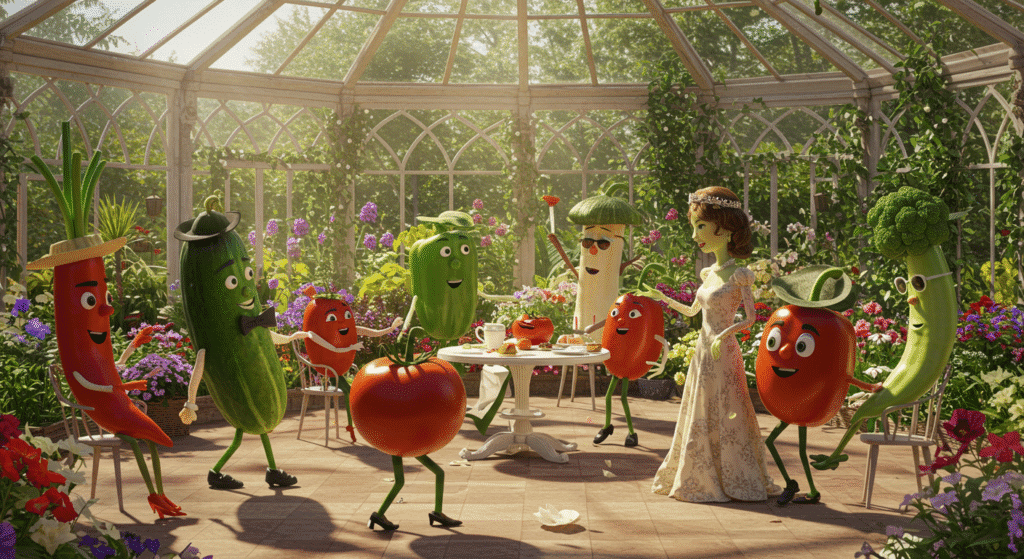
If you turn a carrot into a “carrot stick” and call it a “healthy wand,” your kids might just believe they're eating magic instead of veggies!
“Your diet is a bank account. Good food choices are good investments.” —Bethenny Frankel
Let’s face it—broccoli doesn’t exactly scream “party!” But what if we turned healthy eating into an adventure? I think one great way to do this is by involving friends or family in meal prep. Picture this: you’re chopping up colorful bell peppers while your best friend dances around the kitchen blasting 80s hits. Suddenly, that veggie stir-fry feels less like a chore and more like a celebration!
You could also try experimenting with different cooking methods or flavors to make healthy eating more exciting. For instance, roasting vegetables is like giving them a warm hug; it brings out their natural sweetness in a way that can surprise even the most skeptical eaters. Seriously, who knew Brussels sprouts could taste like candy? I mean, if you had told me that as a kid, I probably would have laughed and then asked for extra dessert instead! But roasting transforms those little green orbs into caramelized nuggets of deliciousness that are hard to resist.
Now, let’s talk about the magic of flavor combinations. Have you ever tried tossing your veggies with olive oil, garlic, and a sprinkle of sea salt before popping them in the oven? It’s like giving them a spa day! The result is an explosion of taste that makes you feel like a culinary wizard. You might even find yourself craving those roasted veggies over chips—yes, really! When food becomes fun to prepare and enjoy together, it creates positive vibes that stick around long after the last bite.
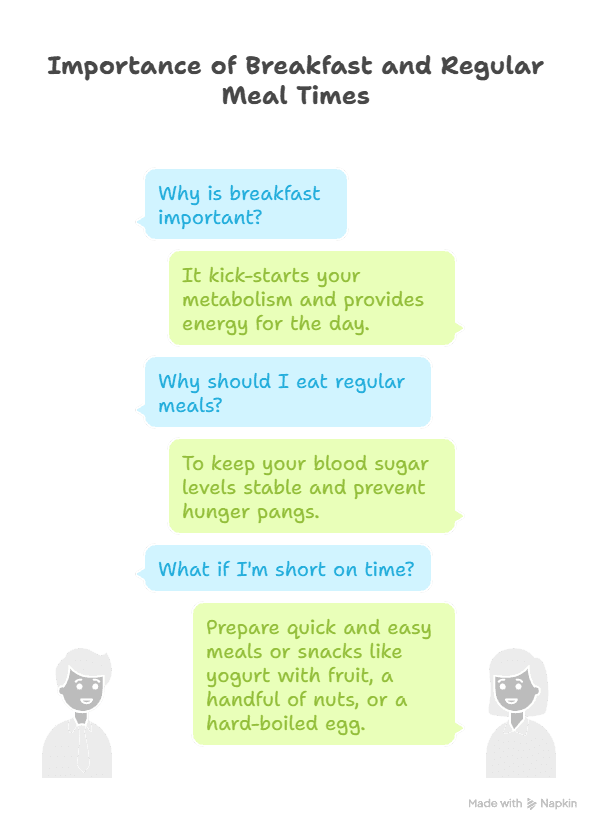
Speaking of which, don’t be afraid to get adventurous! Try adding spices or herbs you’ve never used before. Ever thought about sprinkling some cinnamon on sweet potatoes? Or perhaps tossing asparagus with lemon zest and chili flakes? These simple tweaks can elevate your meals from “meh” to “wow!” Plus, experimenting in the kitchen is an excellent way to bond with family or friends. Imagine gathering everyone around as you all chop vegetables and share stories while waiting for the oven timer to go off. Those moments create memories—and who knows? You might end up discovering new favorites along the way.
And let’s not forget about presentation! Sometimes all it takes is arranging your food artfully on a plate or bowl to make it feel special. Think vibrant colors piled high in a rainbow salad or beautifully layered parfaits filled with yogurt and fruit. Eating should be an experience—not just fuel for survival! When we take time to make our meals visually appealing, it adds another layer of enjoyment that enhances our relationship with food.
In essence, cooking doesn’t have to be tedious or boring—it can be an adventure! By trying out different methods and flavors while involving others in the process, we turn meal prep into something joyful rather than just another chore on our lists. So next time you're tempted by takeout again (no judgment here!), consider firing up your oven instead. Who knows what delightful surprises await when you embrace creativity in the kitchen? After all, creating positive associations with food starts right there at home—one delicious dish at a time!
Building Rituals Around Meals

In Japan, there's a tradition called “Ikigai,” which means finding joy in the little things—like savoring your food so much that you might just start talking to it like it's your best friend. Just don’t expect it to talk back!
“Food is not just what you eat; it's how you feel about what you eat.” —Rachael Ray
Creating rituals can help transform ordinary meals into memorable experiences. For example, consider setting aside time each week for a family dinner where everyone contributes something special. Maybe one person brings dessert while another whips up an exciting new recipe! These shared moments build stronger connections—not only between people but also between us and our food.
Another idea is to establish theme nights! Taco Tuesday? Yes, please! Just imagine the excitement of coming home after a long day and knowing that you’ll be diving into a plate of delicious tacos. There’s something inherently festive about themed meals; they bring a sense of joy and anticipation that can brighten even the dullest week. You could go all out with decorations, music, and even outfits that match the theme. Who says you can’t wear a sombrero while enjoying your homemade guacamole?
How about Meatless Monday? It’s not just about skipping meat; it’s an opportunity to explore vibrant plant-based dishes that you might not usually consider. Picture yourself whipping up a colorful quinoa salad bursting with veggies or trying your hand at making homemade veggie burgers. This isn’t just about nutrition—it’s about getting creative in the kitchen! Plus, starting your week with a healthy meal sets a positive tone for what lies ahead.
Then there’s Stir-Fry Saturday! This is where things get really fun. Grab whatever vegetables are hanging around in your fridge—carrots, bell peppers, broccoli—and throw them into a sizzling pan with some soy sauce and garlic. You can turn this into a family affair by letting everyone choose their favorite ingredients or toppings. Maybe someone loves cashews while another prefers sesame seeds—what better way to bond than over creating the ultimate stir-fry together? As an added bonus, it encourages everyone to eat more veggies without feeling like it's an obligation.
Establishing these themed nights creates routine but also adds excitement to our meals. They give us something fun to look forward to during the week instead of dreading dinner prep every evening. I mean, who doesn’t love having something special planned? It transforms ordinary eating into memorable experiences that foster connection and joy around food.
Moreover, when we involve family members or friends in planning these theme nights, it opens up conversations about food preferences and cooking styles. Maybe Aunt Judy has an amazing taco recipe passed down from generations or Cousin Timmy has discovered how to make killer vegan tacos—sharing these recipes becomes part of the celebration itself!
And let’s be honest: kids (and adults) are much more likely to try new foods if they’re presented within an exciting framework like “Taco Tuesday” or “Meatless Monday.” It makes everything feel less daunting and more like an adventure rather than just another meal on the table.
In short, establishing theme nights is one of those simple yet effective ways to create positive associations with food while making mealtime enjoyable for everyone involved. So gather your loved ones and start brainstorming themes—you never know what culinary magic might unfold when you put on those imaginary chef hats!
Mindful Eating: Savoring Every Bite
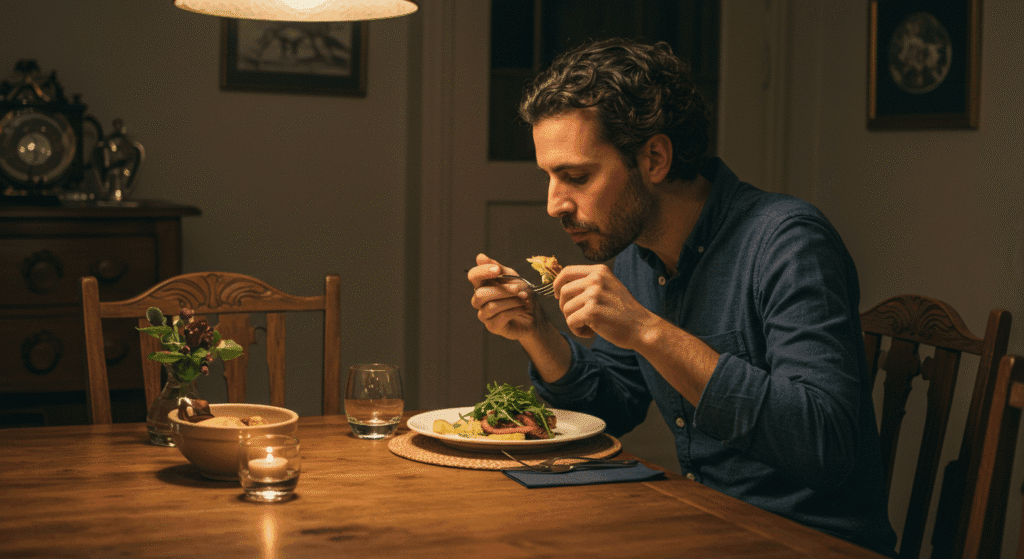
Studies show that eating while distracted can lead to consuming up to 50% more food. So, if you want to eat less, try not to watch cooking shows while snacking—unless you enjoy the taste of regret!
“I'm on the patch right now; it's a diet patch. I just put it on my arm and it makes me feel like I'm losing weight.” —Ellen DeGeneres
Mindful eating is all about being present during meals instead of zoning out in front of the TV or scrolling through social media (guilty!). By focusing on each bite—the flavors, textures, and aromas—we can cultivate appreciation for what we're consuming. Honestly, have you ever noticed how amazing fresh strawberries taste when you really take the time to enjoy them?
To practice mindful eating, try putting away distractions before diving into your meal. I mean, let’s face it—how many times have you sat down with a plate of food only to find yourself scrolling through your phone or binge-watching the latest episode of that show everyone’s talking about? It’s like trying to enjoy a concert while someone’s blasting music in your ear! So, take a moment to breathe deeply before starting; this simple act can set a calming tone for your dining experience. Picture yourself sitting at the table, taking in the colors and aromas of your meal as if you were an artist admiring their masterpiece.
As you eat slowly, pay attention not just to how delicious everything tastes but also how it makes you feel afterward. Ever notice how some foods leave you feeling energized and ready to tackle the world while others make you want to curl up on the couch like a sleepy cat? When we rush through our meals, it becomes easy to overlook these feelings. By savoring each bite, we allow ourselves to truly connect with what we’re consuming. It’s almost like having a conversation with our food!
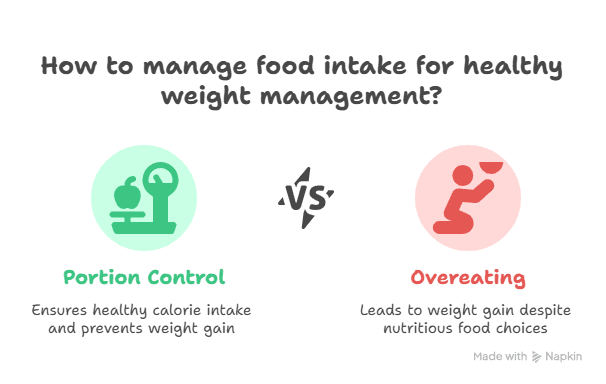
I think one of the most interesting aspects of mindful eating is realizing that our bodies often send us signals about hunger and fullness—signals that can easily get drowned out by distractions. Have you ever been halfway through a bag of chips when suddenly it dawns on you that maybe your stomach isn’t as thrilled about this snack as your taste buds are? Paying attention helps us recognize those moments when we’ve had enough rather than mindlessly finishing whatever's in front of us just because it tastes good.
Another great tip is to engage all five senses during mealtime. What do you see? The vibrant greens of spinach or the golden-brown crust on baked bread? How does it smell? Is there a fragrant aroma wafting from that bowl of pasta? What about texture—does that apple feel crisp and refreshing against your fingertips? These sensory experiences can enhance our enjoyment and help us appreciate our meals more fully.
Interestingly enough, practicing mindful eating can also lead to healthier choices over time. When we become more attuned to how different foods affect our mood and energy levels, we're likely to gravitate toward options that nourish both body and spirit. It's like discovering hidden treasures in our pantry! Instead of reaching for sugary snacks out of habit or boredom, we might find ourselves opting for something wholesome that leaves us feeling satisfied without the post-snack crash.
On the other hand, embracing mindfulness at mealtime doesn’t mean being overly strict or rigid about what we eat. Life is too short not to indulge in pizza night or dessert every now and then! Instead, it's about finding balance—a way to enjoy treats while still being aware of how they fit into our overall well-being.
So next time you're seated at the dinner table—or even enjoying lunch at work—consider giving mindful eating a whirl. Put away those distractions, take some deep breaths, and truly connect with your food. You might be surprised by how much richer each meal becomes when approached with intention and awareness!
Celebrating Small Wins in Your Food Journey

When it comes to dieting, celebrating small wins can be as simple as doing a happy dance for every pound lost. Just remember: if you lose 5 pounds, that's 20 sticks of butter—so bust out the moves like you're at a butter-themed disco!
“Success is the sum of small efforts, repeated day in and day out.” —Robert Collier
Creating positive associations doesn’t happen overnight; it's more like planting seeds that need nurturing over time! Celebrate those small victories along the way—like choosing fruit over chips as an afternoon snack or trying out that new quinoa salad recipe without burning anything (trust me; I've been there).
These little wins add up quickly! Seriously, think about it: every time we opt for a salad over fries or choose water instead of soda, we're not just making a choice; we're building a foundation of positive habits. Each healthier decision is like planting a tiny seed in the garden of our well-being. And guess what? With a little care and attention, those seeds can blossom into something beautiful.
Every time we make healthier choices becomes an opportunity for self-affirmation—a reason to pat ourselves on the back instead of feeling guilty about past indulgences. I mean, who doesn’t love a good high-five from their own conscience? It’s so easy to get bogged down by feelings of guilt when we remember that extra slice of cake or the late-night pizza binge. But here's the kicker: dwelling on those moments doesn’t help us grow; it only weighs us down like an anchor tied to our ankles during a swim race!
Instead, let’s celebrate those small victories! Did you skip dessert last night? Awesome! Give yourself a mental gold star! Made it through the week without reaching for junk food? That deserves at least two gold stars and maybe even some confetti! When we acknowledge these achievements, no matter how minor they may seem, they create positive reinforcement. It's like training a puppy—when they sit on command and you reward them with treats (or belly rubs), they're more likely to repeat that behavior.
I think one of the best parts about these little wins is how they boost our confidence over time. Each healthy choice reinforces our belief in ourselves and our ability to make better decisions. It’s empowering! Have you ever noticed how good it feels to say “no” to unhealthy snacks when you know you’re doing something great for your body? Suddenly, you're not just choosing lettuce over chips; you're reclaiming control over your eating habits and setting yourself up for success.
Interestingly enough, this mindset shift can also ripple out into other areas of life. When we start recognizing our accomplishments in one domain—like nutrition—it often motivates us to tackle other challenges as well. Maybe you'll finally sign up for that yoga class you've been eyeing or take that hike with friends you've been putting off because you feel more energized and confident about your health journey.
And speaking of energy, each healthy choice fuels us differently than less nutritious options do. Choosing whole foods tends to leave us feeling more vibrant and alert rather than sluggish and foggy-headed after consuming processed snacks. So really, every win isn’t just an emotional boost; it's practically turbocharging our bodies too!
Now don't get me wrong—it's perfectly fine to enjoy treats from time to time! Life is all about balance after all. But rather than letting those indulgences define our relationship with food, let’s focus on creating patterns where healthier choices become part of our routine without feeling like punishment.
So next time you find yourself faced with decisions around food—whether at home or out—you might want to ask yourself: “What would my future self thank me for?” Remember that each small step counts toward building healthier habits while fostering positive associations with food—and yes, giving yourself permission to celebrate along the way makes it all even sweeter!
Finding Balance Between Indulgence and Health
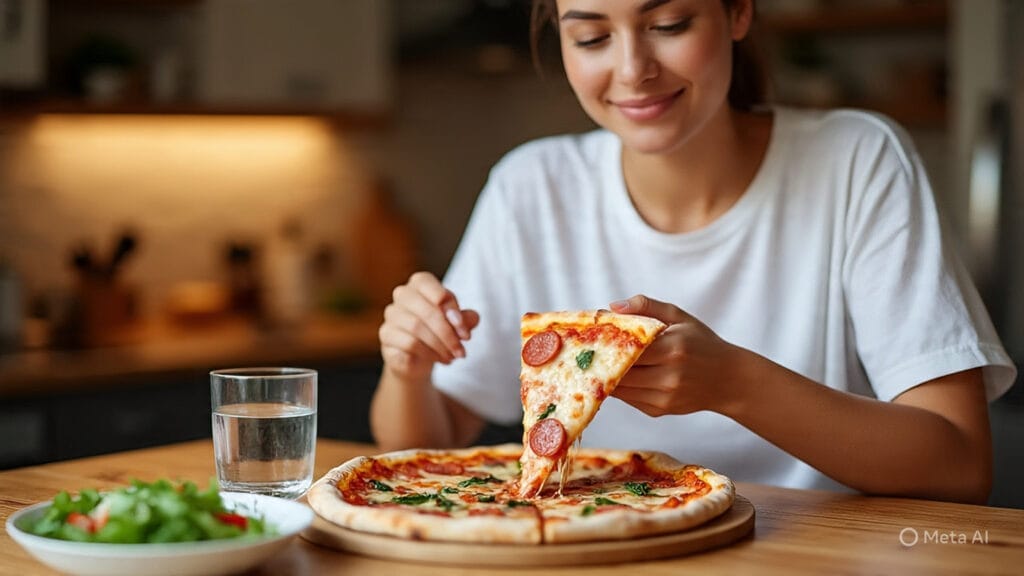
Eating chocolate cake is like a seesaw: too much indulgence and you crash down hard, but a little bit can keep you perfectly balanced—just make sure to hold onto the handlebars or you might end up face-first in the frosting!
“I'm not going to deprive myself of anything. I will have my cake, and I will eat it too.” —Katherine Heigl
Indulgence isn’t bad—it’s part of life! We shouldn’t feel guilty about enjoying birthday cake at celebrations or savoring hot cocoa on cold winter days. However, finding balance is essential in creating lasting positive associations with food.
Instead of viewing certain foods as “bad,” let’s flip the script and see them as occasional treats nestled within an overall balanced diet plan. This mindset shift can be a game changer! It’s like rethinking how we approach life’s little pleasures—who wants to live in a world where chocolate cake is the villain? Not me! By categorizing these foods as special indulgences rather than forbidden fruit, we open up a whole new realm of culinary possibilities.
Imagine this: it’s Friday night, and you’ve had a long week. You’re craving pizza. Now, if you’ve labeled pizza as “bad,” that craving might come with a side of guilt—like a cloud hanging over your head. But what if instead, you viewed it as a treat? You could think, “I’ve been making healthy choices all week; I deserve this!” Suddenly, that slice becomes more than just food; it transforms into a reward for your efforts and dedication.
This approach allows us freedom without guilt while still maintaining health goals! Honestly, who doesn’t want to enjoy their favorite foods without feeling like they’re derailing their progress? When we adopt this perspective, we create room for enjoyment in our eating habits. Instead of feeling restricted by strict rules about what we can or cannot eat, we embrace balance. Yes, there will be days filled with leafy greens and quinoa bowls—but then there are also days meant for savoring gooey brownies or crispy tacos!
It’s essential to understand that treating ourselves occasionally doesn’t mean abandoning our health aspirations. In fact, allowing ourselves these small pleasures can actually enhance our commitment to healthier choices overall. Think about it: when you know you have something delicious to look forward to—a scoop of ice cream after dinner or nachos at game night—you’re less likely to feel deprived during the week. As a matter of fact, this positive anticipation can motivate us to stick with our nutritious meals during those busy weekdays because we know there’s fun waiting at the end.
Moreover, reframing our view on food encourages mindfulness around eating habits. When indulging in that piece of cake or those crispy fries isn’t accompanied by shame but rather joy and satisfaction, we start developing healthier relationships with food. We learn not only how to enjoy flavors but also how to listen to our bodies regarding portions and cravings. Isn’t it interesting how freeing it feels when food isn’t tied up in knots of guilt?
Speaking of which, moderation is key here! The goal isn't to dive headfirst into an endless sea of treats every day; it's about finding that sweet spot (pun intended) where enjoyment meets balance. A good rule of thumb might be aiming for 80% nutritious options and leaving room for 20% fun stuff—just enough wiggle room so you don’t feel like you're missing out on life’s delicious offerings.
And let’s not forget about social connections! Sharing those occasional treats with friends or family can elevate the experience even further. Picture yourself at a birthday party surrounded by laughter and colorful cupcakes—those moments become memories that nourish our souls just as much as healthy meals nourish our bodies.
Ultimately, embracing this philosophy means taking control over your relationship with food instead of letting it control you. So next time you're tempted by something deemed “bad,” take a step back and ask yourself: “How does enjoying this fit into my overall wellness journey?” With each bite savored mindfully without guilt attached—and knowing it's part of an enjoyable balance—we cultivate happiness alongside healthiness!
In conclusion, let go of rigid labels surrounding food choices! Embrace occasional indulgences while focusing on nourishing options most days—it’ll make your journey toward wellness both satisfying and joyful!
Conclusion: A Delicious Future Awaits!
Ultimately, creating positive associations with food requires intention but offers incredible rewards in return! By understanding our emotional ties to different foods and making healthy options fun through rituals or mindful practices—it becomes easier than ever before! So next time you're tempted by those comforting carbs after a rough day remember there are endless opportunities waiting within wholesome ingredients too!
Suggested Resources
Healthy Eating Habits
https://www.eatright.org/health/wellness/healthy-eating-habits
Mindful Eating Practices
https://www.centerformindfuleating.org/
The Power of Positive Thinking
https://www.psychologytoday.com/us/basics/positive-thinking
Cooking Together as Family
https://www.parents.com/family-life/family-dinner-tips/
Frequently Asked Questions
What does it mean to create positive associations with food?
It involves linking healthy foods with enjoyable experiences, memories, or social interactions to build a happier, more balanced relationship with eating.
How can I make healthy foods more enjoyable?
Experimenting with flavors, spices, textures, and cooking methods can make nutritious foods more exciting, satisfying, and fun to prepare.
Why are meal rituals helpful for improving eating habits?
Rituals like theme nights or family cooking create anticipation and joy around food, helping reinforce positive emotions and consistent healthy habits.
How does mindful eating support better food relationships?
Mindful eating encourages you to slow down, savor each bite, and recognize hunger cues, reducing overeating and creating a more meaningful eating experience.
Is it okay to enjoy indulgent foods while building healthy habits?
Yes, enjoying treats in moderation supports balance and reduces guilt while allowing you to maintain a long-term healthy eating pattern.
How can celebrating small wins improve my food journey?
Recognizing small successes builds confidence, encourages consistency, and reinforces healthy behaviors over time.
What are simple ways to make meals more memorable?
Using theme nights, cooking with loved ones, or exploring new recipes can make meals feel special and strengthen positive food associations.

Kevin Collier is a dedicated health enthusiast and writer for FatFAQ.com, where he shares his expertise on weight loss and maintaining a healthy lifestyle. With a focus on practical tips and evidence-based strategies, Kevin aims to inspire readers to achieve their health goals through informed choices. His engaging articles cover nutrition, exercise, and holistic wellness, providing valuable resources for anyone looking to improve their well-being. Passionate about helping others transform their lives, Kevin advocates for sustainable habits that promote lasting health and vitality.





